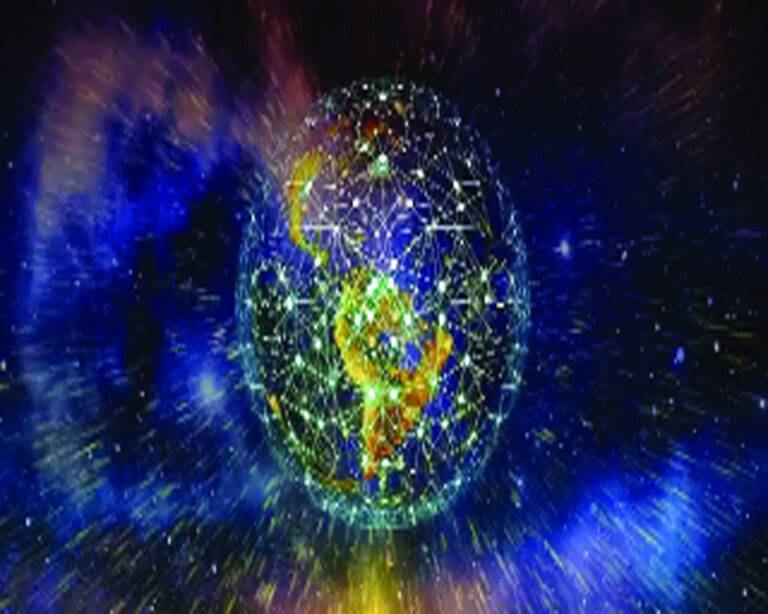Emerging technologies, evolving geopolitical alliances, and the dominance of visual storytelling redefines how messages are created and delivered
One important area of sightings of visible changes from January 2025 onwards is the geopolitical communication environment. This era is positioned to redefine the speedway of global communication, raising important questions. Are you on the 360-degree conversion crisis in telecommunications distribution, content orientation, outreach mechanisms, and deployed tools? Geopolitical, communication ecosystems include immediacy language, focused messaging, outcome-driven delivery, and prioritization of measurable outcomes to identify realistic patterns and global impacts. , accepts a new language.
As the world step into this new chapter of geopolitical change, communication strategies are becoming more refined, dynamic and multidimensional. The need for time is to analyse new alliances in changing political landscapes and major geopolitical developments. The evolving political landscape challenges traditional paradigms, persuasive communication specialists, diplomats and policymakers, rethinking how messages are created, delivered and received at the global stage.
This era demands a framework of communication that not only transcends boundaries, but bridges can also be accurate, creativity, credibility and divide. In 2025, the phrase “A picture is worth a thousand words” takes on a greater resonance. Visual communication has become the most impactful way to deliver messages. A single, well-structured image has the power to tell emotions, ideas, and stories that words may struggle to encapsulate. Based on this, the landscape has changed even further, for example, with the explosion of a short video and the explosion of a 30-second reel.
Their brevity and emotional depth make public opinion an unparalleled tool of influence in shaping public opinion, mobilizing support and even mitigating tensions. This evolution brings great responsibility to communicators in the geopolitical field. Once primarily behind closed doors, diplomacy is increasingly reviving in the public domain through curated visuals, iconic gestures and strategic messaging amplified by digital platforms. The challenge of foreign policy is to balance transparency and strategy to use these tools to build trust while maintaining sensitivity.
As social media continues to rise rapidly, many people face this digital juggernaut and ask whether traditional media can still hold its position. Social media has undoubtedly globalised, democratized communication, giving individuals, governments and organizations a direct channel to their audience.
It thrives with immediacy, engagement and the power to become viral and becomes an essential tool for geopolitical communication. However, traditional media is far from outdated. In an age of information overload, its role as a trustworthy gatekeeper remains important. Social media is the messenger of the moment, while traditional media offers depth, analysis and context. This is essential for informed decision-making. For communication to be effective in this new geopolitical era, two mediums must complement each other and create an instant and lasting overall narrative.
The rise of artificial intelligence has added another layer of complexity to global communication. AI-driven analytics allow unprecedented insight into audience behavior, preferences, and emotions, allowing for ultra-personal messaging. These tools are invaluable to diplomats and foreign policy experts. Foreign policy experts can now create messages with immeasurable accuracy and predict their impact more accurately. However, these advancements create an ethical dilemma. The boundaries between strategic communication and operation are easily blurred, and a robust framework is required to ensure accountability and fairness. As communication situations become more complicated, there is a growing demand for skilled professionals. These experts are strategists, analysts and creators who understand the nuances of messaging in a diverse and rapidly changing world, as well as channels for information.
Traditional media must evolve to remain relevant and embrace digital innovation and an audience-centric approach. Social media, on the other hand, must tackle the issues of misinformation, polarization and echo chambers, and strive to become a platform to unite rather than splitting.
In this day and age, communication is no longer about conveying a message. It is about shaping perceptions, building relationships and promoting action. As the world becomes increasingly interconnected, the ability to communicate effectively becomes one of the most powerful tools in navigating the complexities of the new geopolitical era. In an age characterized by changing alliances and evolving global priorities, multilateral institutions face both challenges and opportunities.
Reworking major countries’ commitments to international frameworks is notified of the vulnerability of global consensus and these institutions in addressing common challenges such as public health, climate change, and economic inequality. It raises questions about roles and relevance. This changing landscape calls for a more nuanced approach to diplomacy within multilateral spaces, with a new focus on collective responsibility. For these institutions to thrive in a complex geopolitical climate, they need to leverage communications technology to promote transparency, attract diverse stakeholders and amplify their ability to promote action. Whether we shape the world in a way that we just begin to understand, through the lens of our cameras, the extent of our tweets, or the depth of our research report, the stories we tell, and how we communicate. figure.
(The writer is a former civil servant. The opinions are personal. Input by Vaishnavie Srinivasan and Zoya Ahmad)


